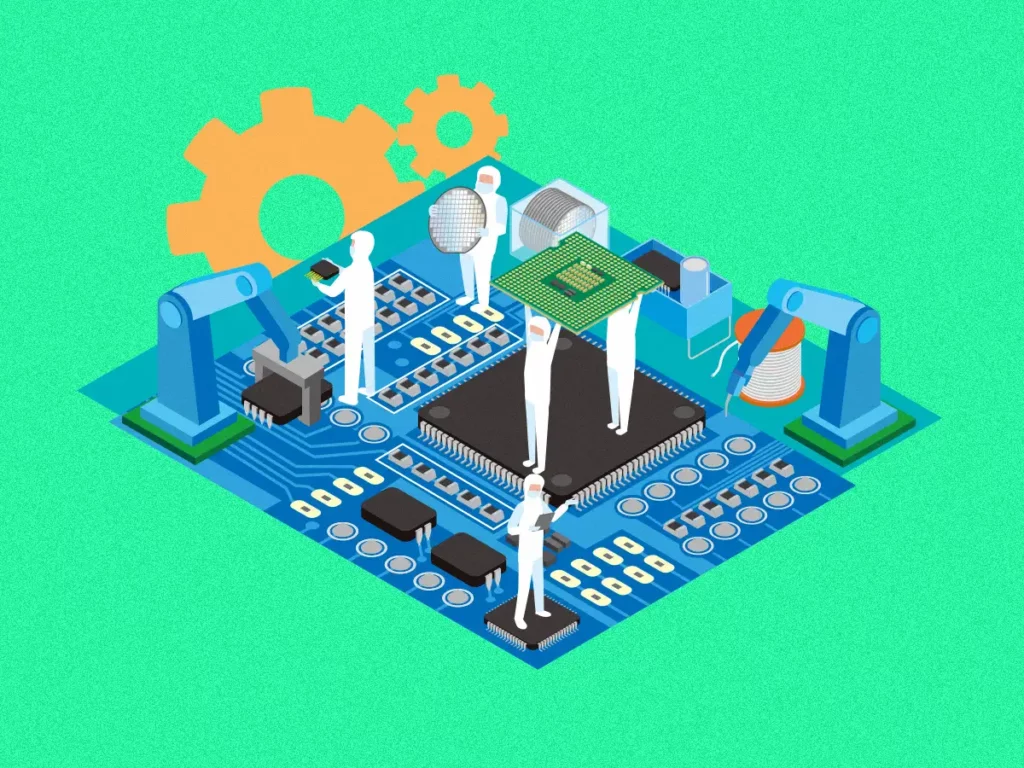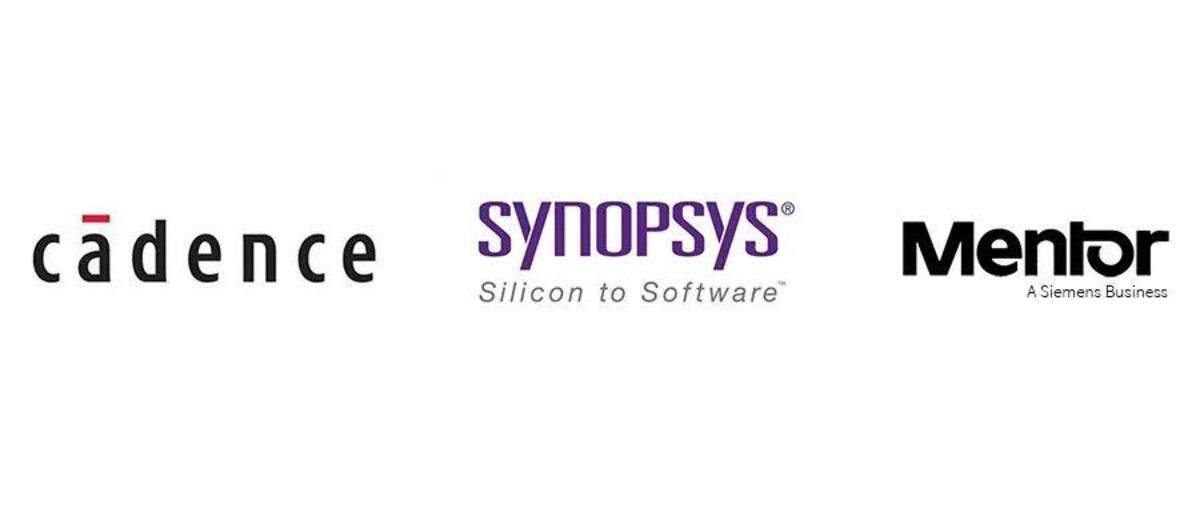
Introduction
VLSI is the process of creating integrated circuits by combining thousands of transistors into a single chip. It’s a field that’s not just about understanding electronics but also about the software that brings these electronic concepts to life. The right tools can make the difference between a functional design and a revolutionary one. As technology evolves, so does the need for more sophisticated and efficient tools. Here’s a comparison of the top industry giants- Synopsys Cadence and Siemens EDA.
Follow us on LinkedIn for everything around Semiconductors & AI
1. Synopsys – The Industry Standard
Synopsys is a leader in the EDA tool space, boasting a significant market share. They provide a powerful suite of tools that cover the entire design flow, including essential functions like logic synthesis, simulation, and static timing analysis.
Catapult, a high-level synthesis tool, excels at translating C/C++ code into hardware descriptions (RTL), accelerating the design process.
PowerPro is another of Synopsys’s flagship tools. It’s renowned for its low-power optimization capabilities. This means engineers can identify and fix power consumption issues early in the design phase. Synopsys further solidifies its position as a one-stop shop for serious VLSI engineers by offering industry-leading solutions for formal verification, custom design, and physical implementation.
Strengths:
Digital Design: Industry leader in logic synthesis (Design Compiler) with excellent performance and power optimization capabilities.
Verification: Offers VCS, a powerful simulation tool with good scalability and advanced debugging features.
Formal Verification: Offers Formality, a leading tool for formally verifying chip designs to ensure they meet functional specifications.
IP Cores: Provides a wide range of pre-designed and pre-verified intellectual property (IP) cores that can be integrated into your chip design, saving time and resources.
Weaknesses:
Layout: While Synopsys offers place and route tools (IC Compiler), Cadence might have a slight edge in this area.
Analog/Mixed-Signal: While competitive solutions exist (Custom Compiler), Cadence’s Virtuoso suite might be more established.
Read More: Beyond Nvidia: Top 5 Under-the-Radar AI Hardware Companies Poised to Take Off – techovedas
2. Cadence: The All-in-One Solution
Cadence is another name that resonates with quality in the VLSI community. Their range of EDA software covers everything from design capture (like Cadence Capture) to physical verification (using tools like Virtuoso for analog design and Allegro for PCB layout).
Cadence’s tools are known for their reliability and comprehensive features, making them a staple in many professional environments. Their expertise in computational lithography simulation makes them a go-to choice for designers pushing the boundaries of chip manufacturability.
Cadence also offers a robust library of Integrated Circuit (IP) blocks that can be incorporated into designs, saving engineers valuable development time.
Strengths:
Layout: Offers industry-leading place and route tools known for their speed, efficiency, and advanced capabilities for complex designs.
Analog/Mixed-Signal: Virtuoso suite is widely recognized as the gold standard for analog/mixed-signal design, offering a rich set of tools for schematic capture, simulation, layout, and verification.
Custom Design: Strong focus on custom design flows, with tools specifically designed for high-performance and low-power applications.
Weaknesses:
Cost: Can be more expensive compared to Synopsys for some tools, particularly for perpetual licenses.
Learning Curve: Cadence tools can have a steeper learning curve compared to Synopsys, especially for new users.
Read More: SK Hynix Plans to Produce 3D NAND at -70°C : Could Achieve Upto 400 Layers – techovedas
3. Siemens EDA (formerly Mentor Graphics):
Siemens EDA is often seen as a more cost-effective option compared to Synopsys and Cadence. This can be especially attractive for smaller design teams, startups, or projects with tighter budgets.
Siemens EDA offers a broad range of tools that cover most aspects of the VLSI design flow, from capturing the initial design idea to the final physical layout. This allows you to potentially use a single vendor for most of your EDA needs, simplifying your workflow.pen_spark
Strengths:
Value: Often offers a more cost-effective option compared to Synopsys and Cadence, particularly for smaller design teams or less complex projects.
Breadth of Tools: Provides a comprehensive suite of tools covering most aspects of the design flow, from RTL design to physical design.
Hardware Description Languages (HDLs): Offers QuestaSim, a popular simulator that supports multiple HDLs like Verilog, VHDL, and SystemVerilog.
Weaknesses:
Market Share: May not be as dominant in specific areas like synthesis or verification compared to Synopsys and Cadence.
Support: Support infrastructure might be less extensive compared to the bigger players.pen_spark
Factors to Consider:
Project Type:
- Digital Design: Both Cadence and Synopsys excel here, with Cadence having a slight lead in layout (place and route).
- Analog/Mixed-Signal: Cadence’s Virtuoso suite is a strong contender, but Synopsys offers competitive solutions as well.
- FPGA Implementation: While both offer tools, often the FPGA vendor’s own tools (like Xilinx’s Vivado) are preferred for tight integration.
- Specific Needs:
- Simulation: Both Cadence (Verilog/VHDL simulators) and Synopsys (VCS) are industry leaders.
- Formal Verification: Both have strong offerings, but Synopsys might have a slight edge.
- Team Expertise: If your team is already familiar with a specific vendor’s tools, the learning curve for new hires might be lower.
- Cost and Licensing: Both Cadence and Synopsys can be expensive. Explore licensing options (rental, perpetual) that fit your project needs. Mentor Graphics (Siemens EDA) might offer a more cost-effective option for some applications.
Read More: Top 5 VLSI Books for Beginners in VLSI Technology 2024 – techovedas
Specific Functionalities
Synopsys: Power Optimization and Battery Life Estimation Synopsys offers a comprehensive suite for low-power optimization, which includes tools like PowerPro for reducing power consumption at the RTL level. One of its key functionalities is the ability to perform accurate power estimation. This is crucial for predicting battery life in portable devices. This feature allows designers to make informed decisions early in the design process, ensuring that the final product meets the desired energy efficiency standards.
Cadence Design Systems: Silicon to System Design Cadence provides a wide array of functionalities across the design spectrum. For silicon design, it offers tools for creation, simulation, implementation, and signoff of both analog and digital circuits. On the system side, Cadence excels with its multiphysics analysis capabilities, which are essential for designing complex devices ranging from chips to smartphones and even airplanes. This holistic approach ensures that every aspect of the design process is covered, from the chip level to the entire system.
Read More; Made in India: Tata Electronics Exports First Batch of Semiconductor Chip – techovedas
Cost Considerations
In terms of cost, both Synopsys and Cadence are premium tools that come with a significant price tag, reflecting their status as industry-standard solutions. However, Synopsys tends to be more focused on high-level synthesis and verification, which might offer cost advantages in these specific areas. Cadence’s strength lies in its end-to-end solutions, which could be more cost-effective for organizations looking for a comprehensive package.
$20 Million Initiative: How Nvidia & MITRE Supercomputer Will Boost AI for US Govt. – techovedas
Here’s an example project breakdown highlighting where each EDA tool vendor might shine:
Project: Developing a high-performance mobile processor with both digital and analog/mixed-signal components.
- Synopsys:
- Digital Design: Use Synopsys’ Design Compiler for logic synthesis due to its industry-leading performance and power optimization capabilities, crucial for a mobile processor.
- Verification: Leverage Synopsys’ VCS for powerful simulation to ensure the digital logic functions correctly at high speeds.
- IP Cores: Utilize pre-verified Synopsys IP cores for standard functions like memory controllers or bus interfaces, saving development time and resources.
- Cadence:
- Analog/Mixed-Signal Design: Utilize Cadence’s Virtuoso suite, the industry standard, for designing the analog and mixed-signal components like voltage regulators or RF interfaces, critical for efficient power management and communication.
- Layout: Use Cadence’s Innovator or Genus for place and route due to their speed and efficiency in handling complex designs like high-performance processors.
- Siemens EDA (Mentor Graphics):
- RTL Design: Use Siemens EDA’s tools for initial design capture in a Hardware Description Language (HDL) like Verilog or VHDL.
- Verification: Utilize QuestaSim for basic functional verification of the digital design before moving to Synopsys’ VCS for more advanced simulations.
- Cost-Effectiveness: Throughout the project, Siemens EDA tools can potentially offer a more cost-effective solution compared to Synopsys or Cadence, especially for tasks that don’t require the absolute top-of-the-line features.
This is just one example, and the specific tool choices can vary depending on project details and team preferences. But it showcases how each vendor can contribute with their strengths:
- Synopsys – Optimizing digital design performance and power efficiency.
- Cadence – Leading the way in analog/mixed-signal design and complex digital layout.
- Siemens EDA – Offering a comprehensive, cost-effective suite for various design stages.
Conclusion
The choice between Synopsys and Cadence hinges on your specific design needs. Synopsys excels in logic design and low-power optimization, making it ideal for creating energy-efficient digital circuits. For those requiring a full-suite solution across both digital and analog domains, Cadence offers a robust platform. In the end, you should prioritize the functionalities most critical for your VLSI design project to determine which company, Synopsys or Cadence, offers the best EDA tools for your needs. Both companies are leaders in the industry, providing powerful solutions.



